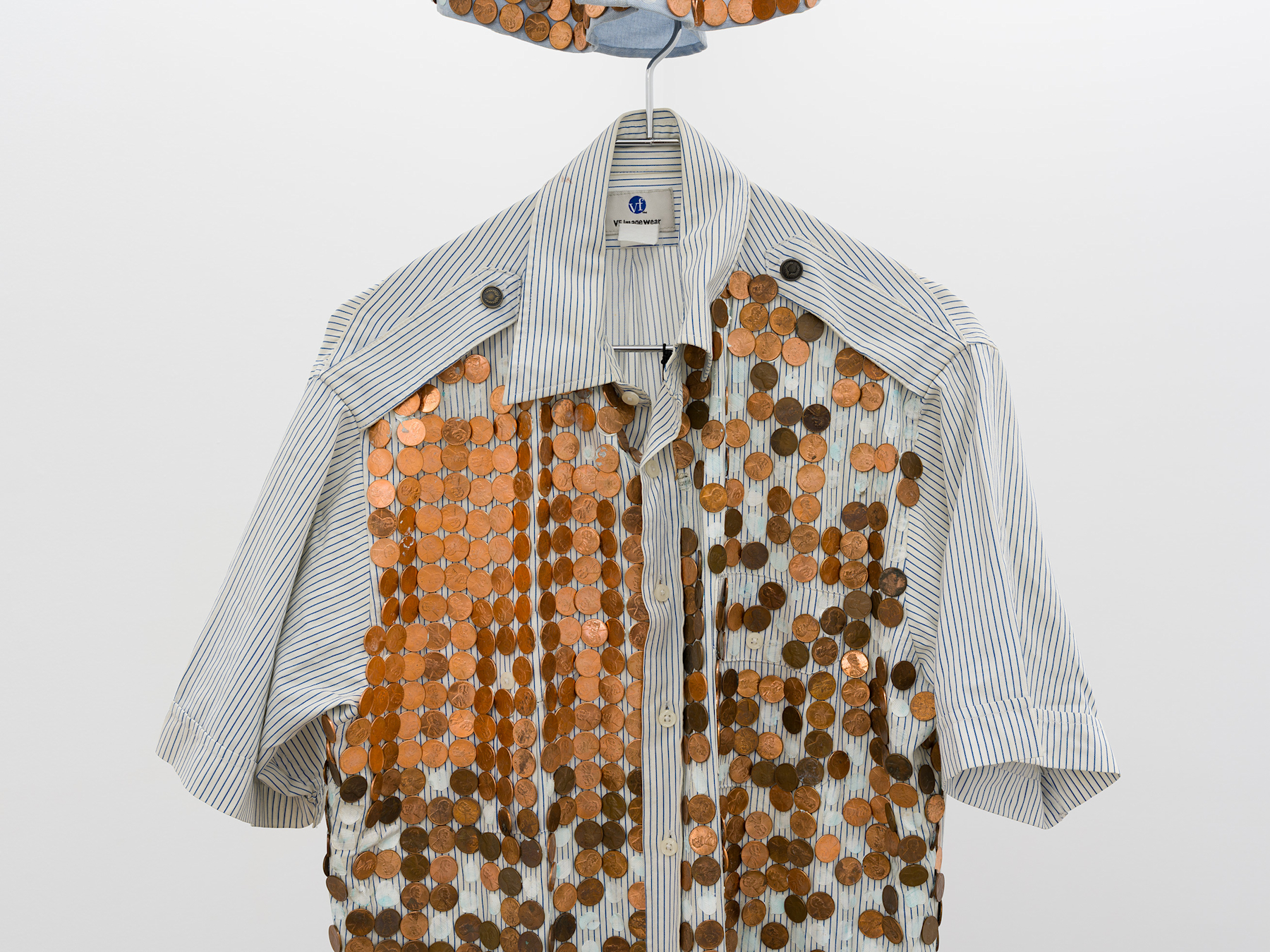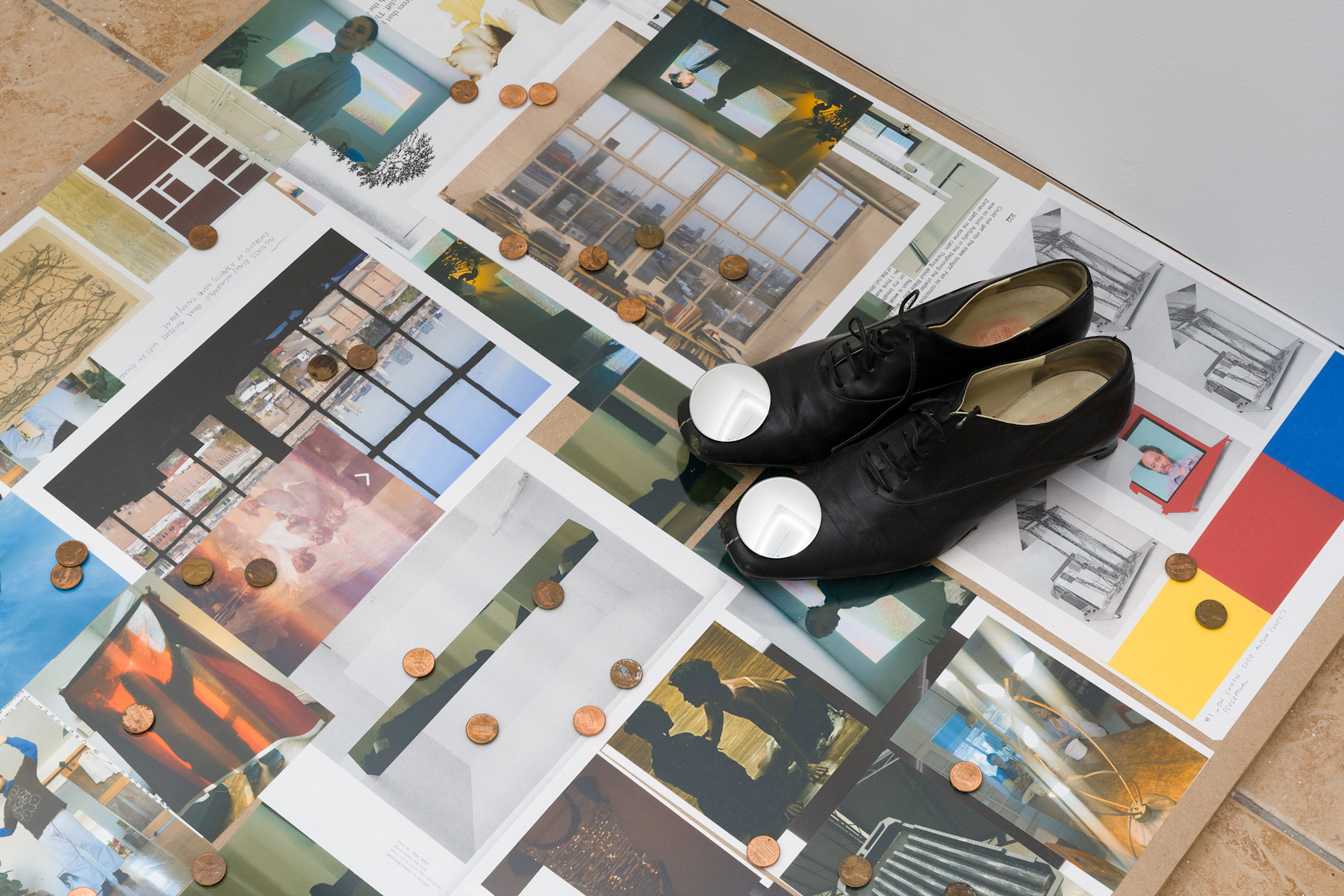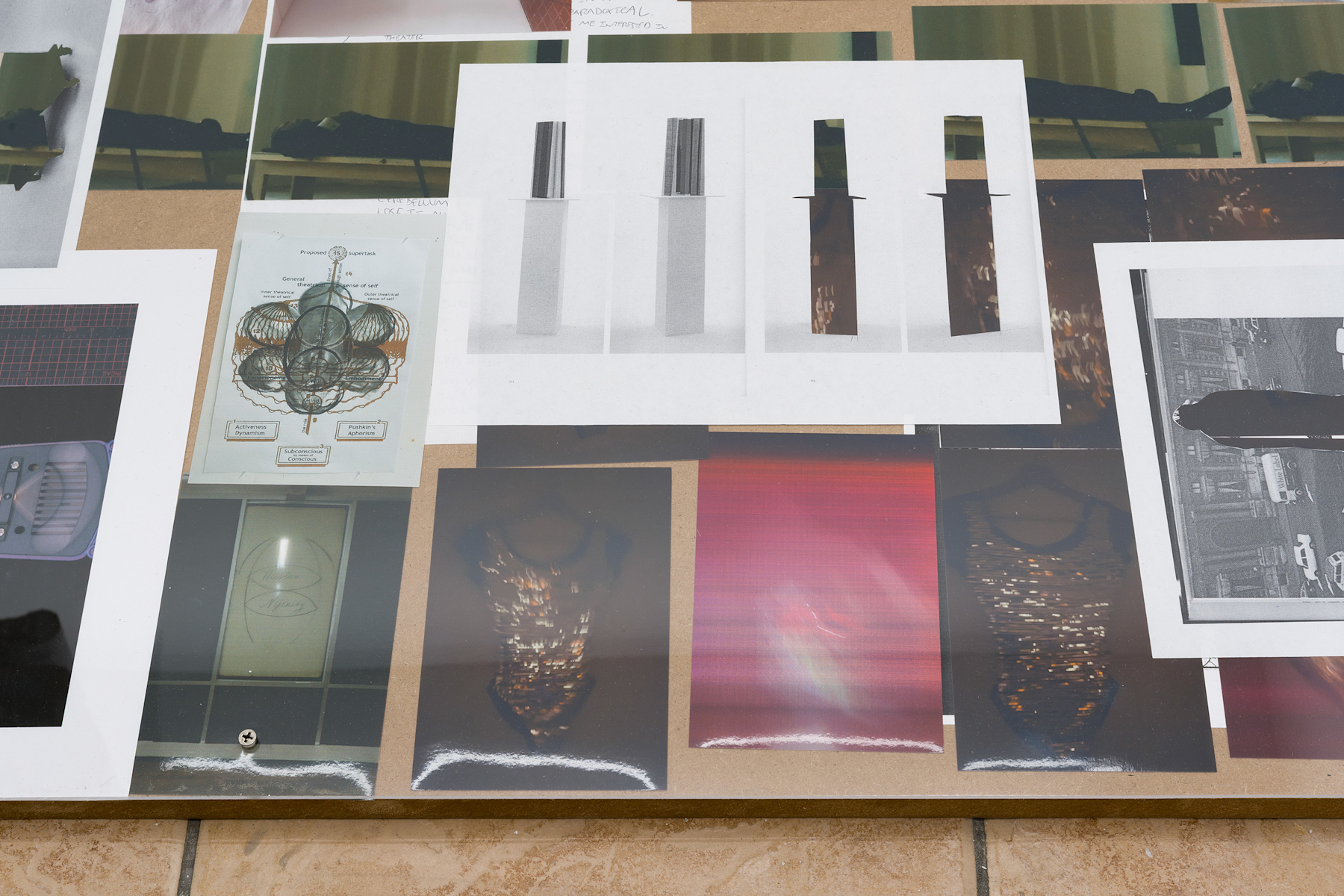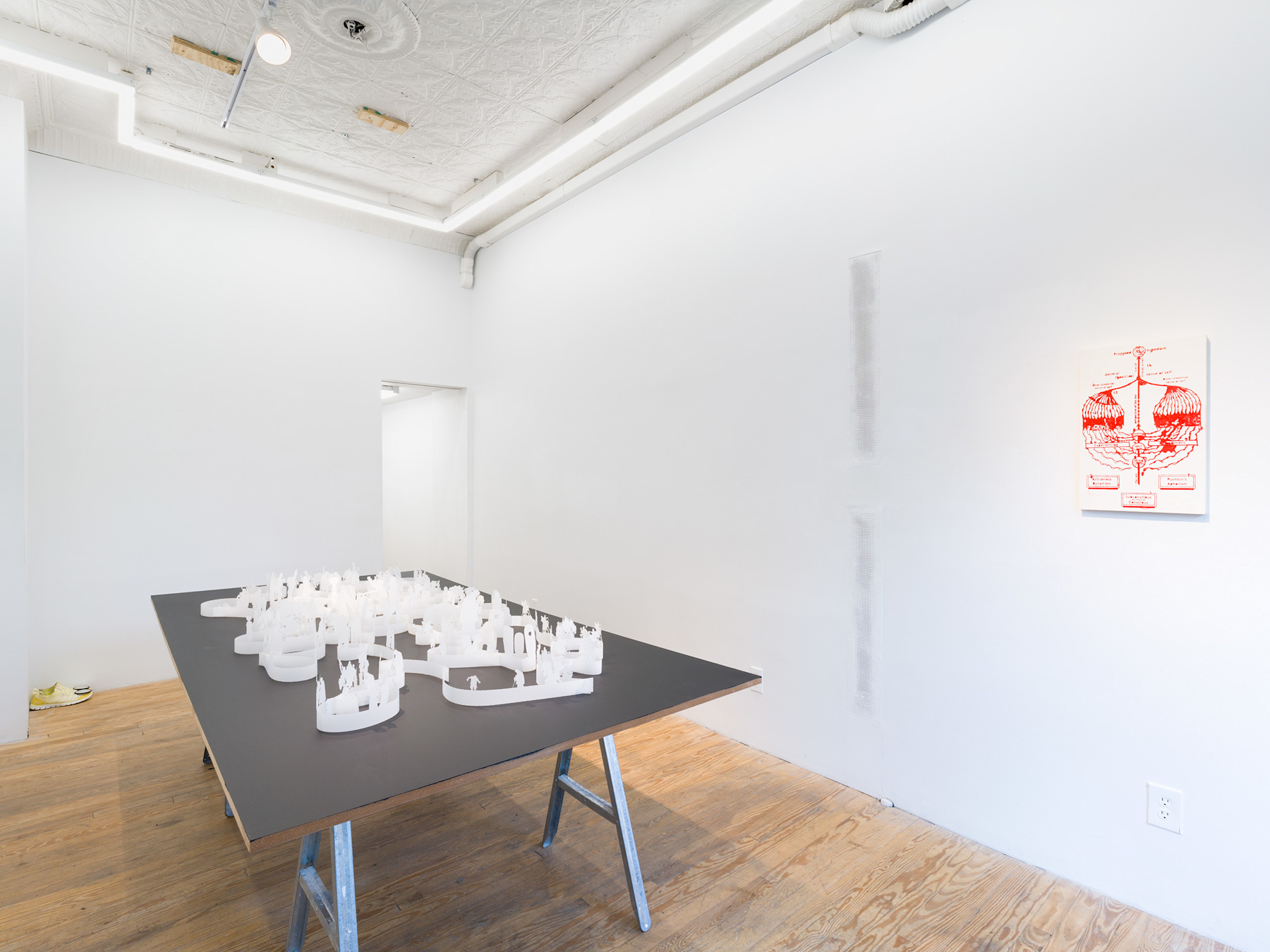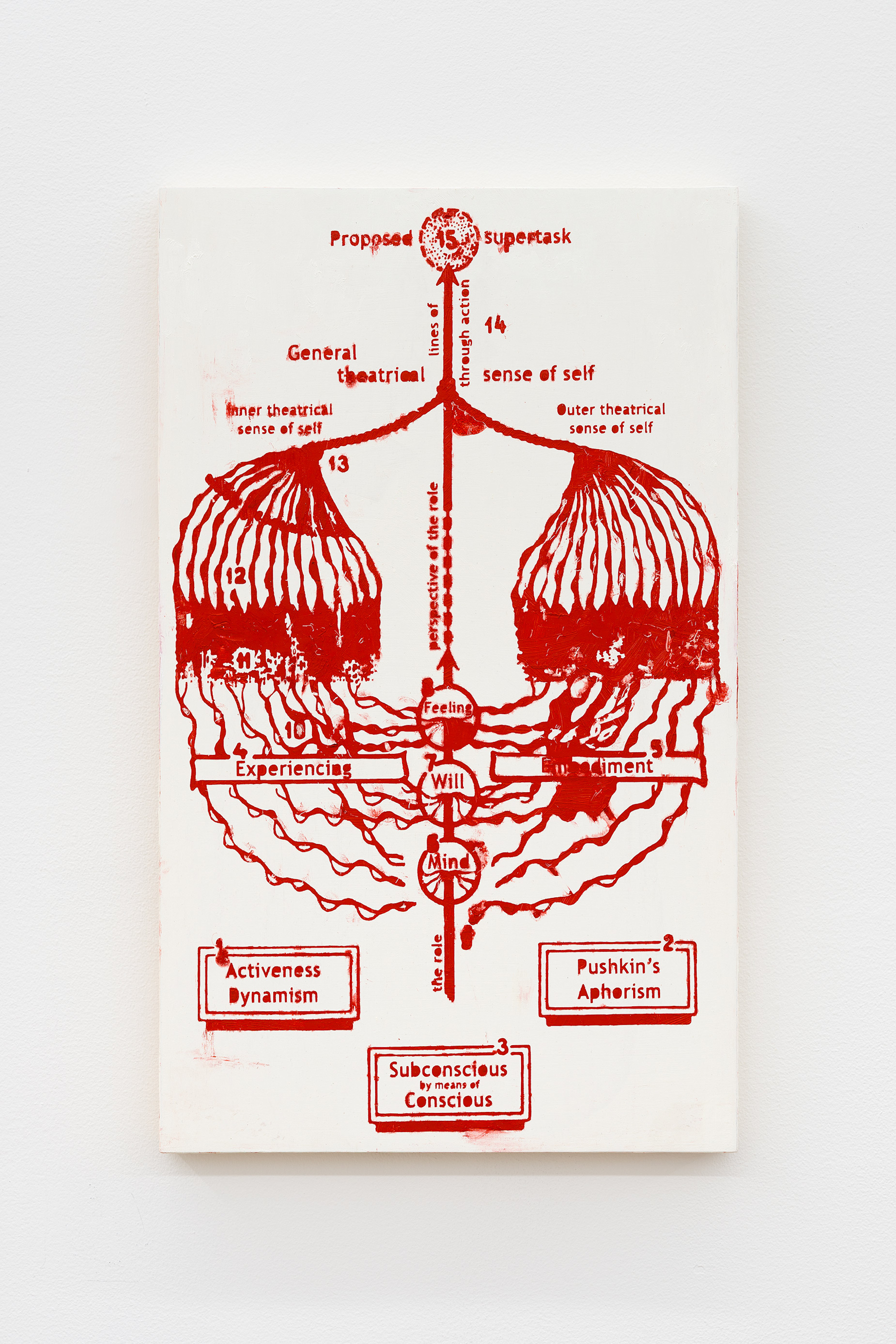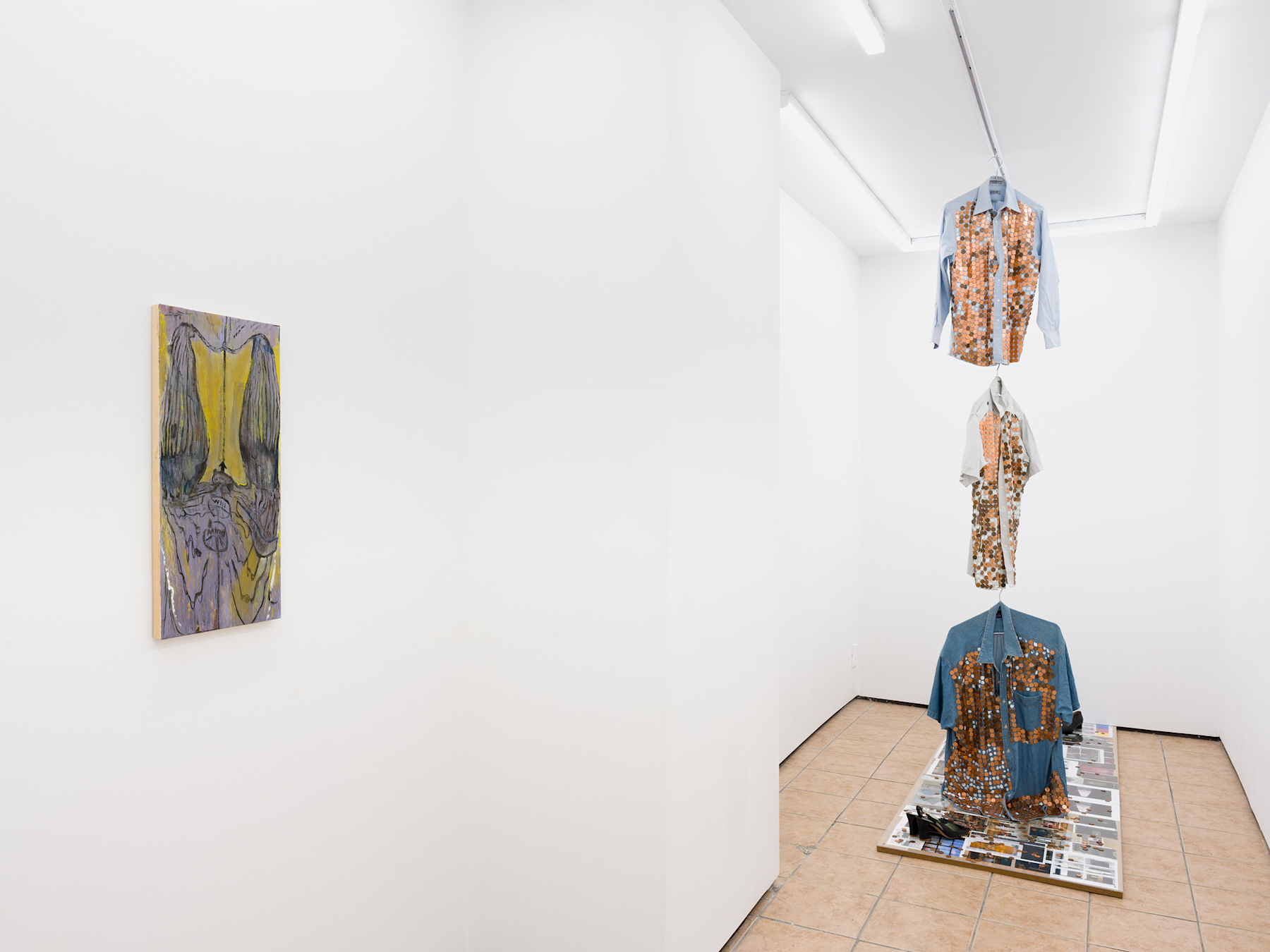
deadliness is deceptive and can appear anywhere
In the early 20th century, Russian theater practitioner Konstantin Stanislavski began to develop his famous “Method” for actors — a way to make contact with the subconscious through conscious choices. He systematized this approach in diagrams that resemble lungs. Wiggly lines flow between inner and outer, experience and embodiment, thinking and feeling, as if conveying messages between the realms or dissolving the boundary between them.
Several great actors have confessed to us that their favorite role to play is that of the corpse. The difficulty of the task is endlessly generative: one strives every night to get better and better at being dead. To breathe in such a way as to appear not to breathe, one must quiet the mind and body so as to approach that great mystery of nothingness. Peter Brook writes that at its most basic, theater is a person walking across an empty space and someone else watching.
Séances were once a popular method of speaking to the dead. Participants would assemble in a circle around a table to receive messages from the spirit realm, with the séancer acting as a vessel for the beyond. The dead talked by using the table itself as an instrument for communication: tapping it, turning it, making it float. The table became a stage for the invisible. We could call this deceit — or a great performance. Correspondence is a conviction that truth exists not in any one person but in the empty space between them.
A city is a theater is a psychic space, haunted by the things we’ve buried — our secrets, our lies, our trash, our dead. And when we run out of space, we store things in a columbarium, where cremated remnants remain above ground, housed like pigeons in small individualized compartments. “Columb” is Latin for dove, as the funerary niches in a columbarium resemble the structures historically used for keeping doves. These dovecotes were often add-on architectures — apartment buildings for birds built onto the human housing.
The progression of the word columbarium from a home for doves to a home for dead humans reveals the spiritual significance of the former as bearers of a peace that humans can only hope to attain once we’re gone.
Along with pyramids and tomb monuments, columbaria are a form of necropolis architecture — the urban design for a city of the dead. But rather than seeking either to reach toward the heavens or emulate life, they appear to offer a more sober, egalitarian vision. In the afterlife, we each have a small apartment that is equal in size to that of our neighbor’s.
— Canal Street Research Association, June 2025
